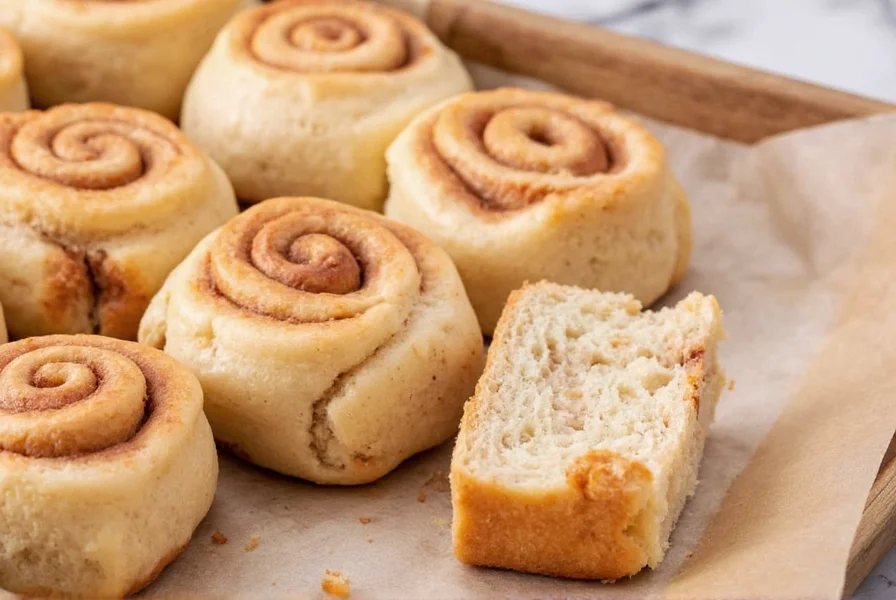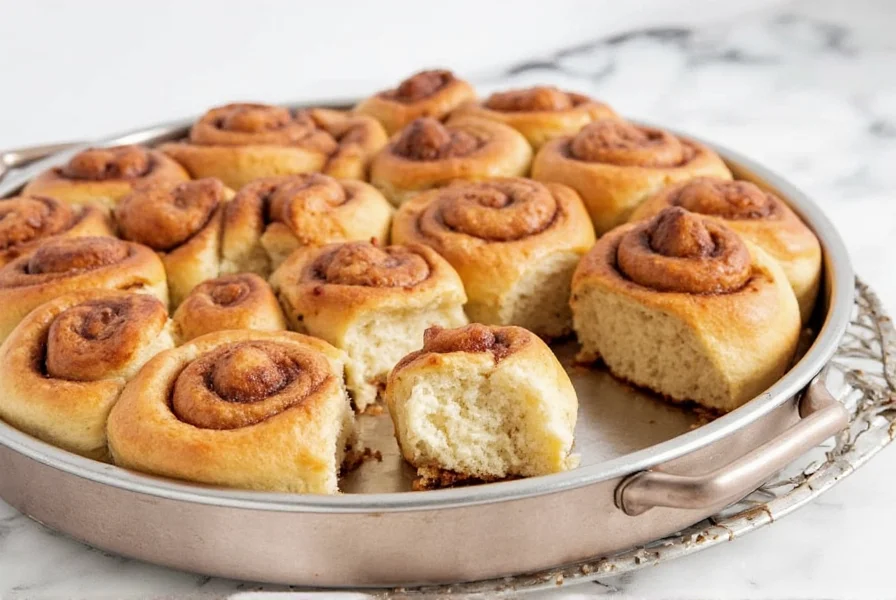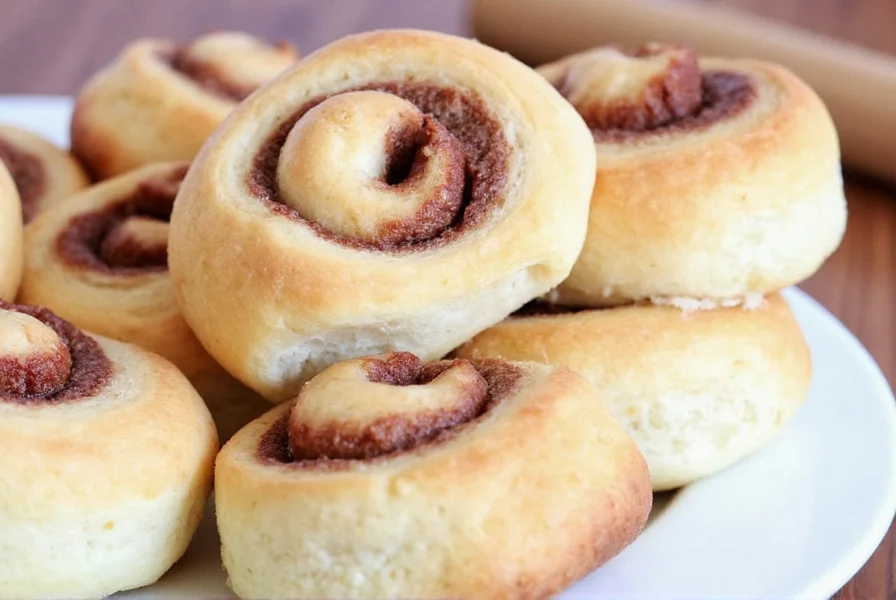Frozen cinnamon rolls offer convenience without sacrificing that homemade taste many bakers crave. Whether you're preparing breakfast for a holiday morning or stocking your freezer for busy weekdays, understanding the proper techniques ensures perfect results every time. This comprehensive guide covers everything from thawing methods to baking temperatures and troubleshooting common issues that arise when working with frozen dough.
Understanding Frozen Cinnamon Roll Preparation Methods
There are three primary approaches to baking frozen cinnamon rolls, each with specific timing requirements. The method you choose depends on your schedule and desired outcome. Never thaw frozen cinnamon rolls at room temperature for more than two hours to prevent bacterial growth in the dough.
| Preparation Method | Thawing Time | Baking Temperature | Baking Time | Best For |
|---|---|---|---|---|
| Refrigerator Thaw | 8-12 hours | 350°F (175°C) | 18-22 minutes | Most consistent results |
| Room Temperature Thaw | 30-60 minutes | 350°F (175°C) | 20-25 minutes | Quick preparation |
| Direct From Freezer | None | 325°F (163°C) | 25-35 minutes | Emergency baking |
Optimal Baking Conditions for Perfect Results
Temperature control proves critical when baking frozen cinnamon rolls. Many home bakers make the mistake of using too high a temperature, which burns the exterior while leaving the center undercooked. The ideal oven temperature ranges between 325-350°F (163-175°C). Lower temperatures require longer baking times but produce more even results.
Proper spacing in the baking pan remains essential—place rolls at least two inches apart to prevent them from merging during the rising process. For best results, use a light-colored metal pan rather than dark non-stick varieties, which can cause over-browning on the bottom.

Storage Guidelines for Frozen Cinnamon Rolls
Understanding proper storage extends the shelf life of both uncooked and baked cinnamon rolls. Commercially frozen cinnamon rolls typically maintain quality for 2-3 months in the freezer, while homemade versions last 1-2 months. Always wrap homemade rolls tightly in plastic wrap before placing them in airtight freezer bags.
Never refreeze thawed cinnamon rolls, as this damages the yeast and gluten structure. If you've partially thawed more rolls than needed, bake them immediately and store the cooled rolls in the refrigerator for up to five days.
Troubleshooting Common Frozen Cinnamon Roll Problems
Even experienced bakers encounter issues with frozen cinnamon rolls. Understanding these common problems helps achieve consistent results:
- Rolls didn't rise properly: This typically occurs when the yeast becomes inactive due to improper storage or excessive freezing time. Check expiration dates on commercial products.
- Burnt bottoms: Often caused by using dark pans or placing the pan too close to the oven's heating element. Try placing an additional baking sheet on the rack below.
- Dry texture: Results from overbaking or insufficient moisture in the dough. Cover rolls loosely with foil during the last 10 minutes of baking if they're browning too quickly.
- Filling leakage: Occurs when rolls aren't properly sealed before freezing. Gently press the edges together after thawing but before baking.
Creative Variations for Frozen Cinnamon Roll Lovers
While traditional cinnamon rolls satisfy most palates, experimenting with variations keeps breakfast exciting. Try these modifications after the rolls have partially baked (about 15 minutes in):
- Add chopped pecans or walnuts on top during the last 5 minutes of baking
- Drizzle with cream cheese glaze immediately after removing from oven
- Insert small pieces of apple or pear into the center before baking
- Brush with melted butter and extra cinnamon sugar halfway through baking

Comparing Commercial Brands and Homemade Options
When selecting frozen cinnamon rolls, consider these factors beyond convenience. Commercial brands typically contain preservatives that extend shelf life but may affect texture. Homemade frozen rolls generally produce superior flavor but require more initial preparation time.
Look for products with simple ingredient lists when purchasing commercial options. Avoid brands listing high fructose corn syrup as a primary ingredient, as this often results in an artificial sweetness that overwhelms the cinnamon flavor. For those with dietary restrictions, several brands now offer gluten-free and vegan frozen cinnamon roll options with surprisingly good results.
Frequently Asked Questions
Can I bake frozen cinnamon rolls without thawing first?
Yes, you can bake frozen cinnamon rolls directly from the freezer, though results may vary. Increase baking time to 25-35 minutes at 325°F (163°C) and check frequently to prevent over-browning. The center may remain doughy if not baked sufficiently, so use an instant-read thermometer to verify the internal temperature reaches 190°F (88°C).
Why do my frozen cinnamon rolls come out dry?
Dry cinnamon rolls typically result from overbaking or improper storage before baking. Frozen dough loses moisture during extended freezer storage. To prevent dryness, reduce baking time by 2-3 minutes and cover loosely with aluminum foil during the final baking stage. Brushing with melted butter immediately after baking also helps retain moisture.
How do I prevent cinnamon roll filling from leaking during baking?
Filling leakage occurs when the dough doesn't properly seal around the filling. To prevent this, ensure rolls are tightly rolled before freezing, leaving no gaps. When baking from frozen, gently press the edges together after the initial 10 minutes of baking when the dough becomes more pliable. Using a slightly thicker filling consistency also reduces leakage.
What's the best way to reheat frozen baked cinnamon rolls?
For best results, thaw baked cinnamon rolls in the refrigerator overnight, then reheat in a 300°F (150°C) oven for 8-10 minutes. Alternatively, microwave individual rolls for 15-20 seconds covered with a damp paper towel. Never reheat frozen baked rolls directly from the freezer, as this creates uneven heating and a gummy texture.











 浙公网安备
33010002000092号
浙公网安备
33010002000092号 浙B2-20120091-4
浙B2-20120091-4